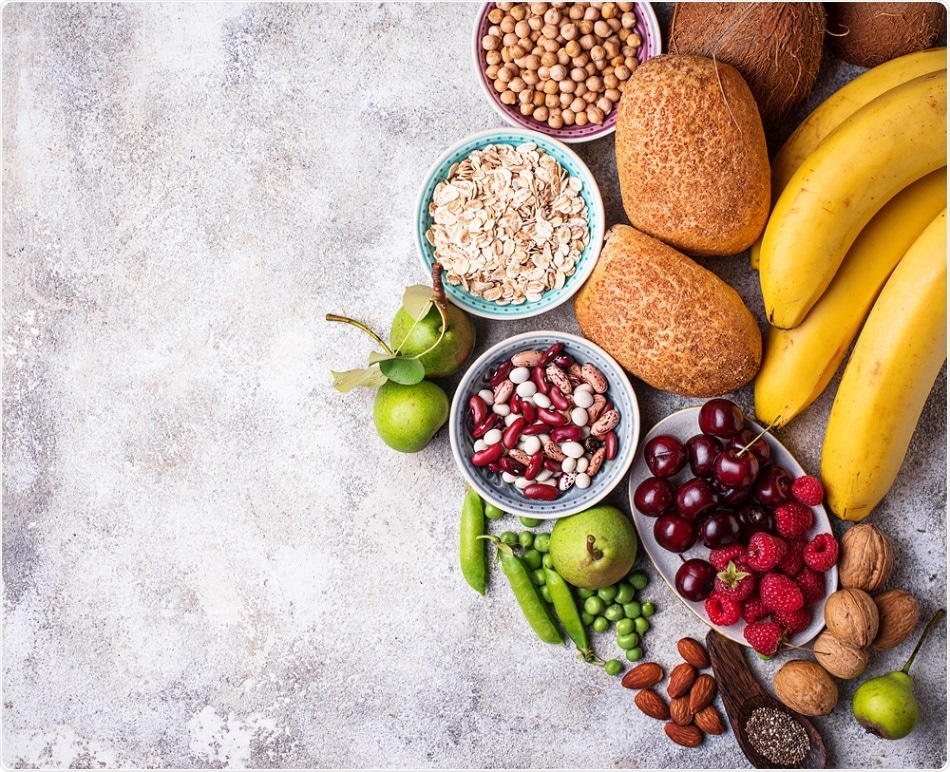Dietary fiber, found primarily in vegetables, fruits, legumes, and whole grains, has been found to have many health benefits. Now, eating foods rich in fiber has been found to reduce the risk of hypertension and type 2 diabetes, according to a new study presented at the American College of Cardiology Middle East Conference 2019.
 Yulia Furman | Shutterstock
Yulia Furman | Shutterstock
Hypertension or elevated blood pressure is a condition that may lead to many complications, including cardiovascular disease, heart attack, kidney disease, and even stroke. Meanwhile, type 2 diabetes may also lead to other complications, including cardiovascular disease, neuropathy, kidney disease, and vision loss, among others. These two are huge risk factors for heart disease and stroke, so reducing the risk for both conditions is essential.
A team of researchers at the Care Well Heart and Super Specialty Hospital in India explored the connection between a high-fiber diet and cardiovascular risk factors.
Dietary fiber, also dubbed as roughage or bulk, constitutes parts of plant foods the body can’t digest or absorb; hence, it just passes through the alimentary canal of the digestive system.
Many studies have shown that dietary fiber, particularly whole grains and cereal, can help lower the risk of many cardiometabolic diseases such as obesity, insulin resistance, and cardiovascular disease.
In some cases, it also reduces the chance of acquiring colorectal cancer. Increased fiber intake has also been associated with lower cholesterol levels.
People should consume 40 g/2000kcla of the recommended dietary allowance (RDA). In the study, the patients had type 2 diabetes and an average calorie intake of 1,200 to 1,500 kcal, which means their RDA for fiber should be around 24 to 30 g.
The team also followed 200 participants, taking note of their fiber intake at baseline at three months and six months. They also gave the patients diet prescriptions, including a list of food groups with portion sizes. With the help of licensed dieticians, they provided counseling sessions to ascertain that the participants understood the information.
The patients shared their food intake through photos sent on WhatsApp, which helped quantify their fiber intake and portion sizes. They also used phone calls for about three times a week, where they shared their detailed dietary recall, or what kind of food items they ate in the past week.
This study helps us determine three important things for this patient population. Firstly, a high fiber diet is important in cases of diabetes and hypertension to prevent future cardiovascular disease. Secondly, medical nutrition therapy and regular counseling sessions also hold great importance in treating and prevention of diabetes and hypertension. Thirdly, this type of diet in combination with medical treatment can improve dyslipidemia, pulse wave velocity, waist-to-hip ratio and hypertension.”
Dr. Rohit Kapoor, medical director of Care Well Heart and Super Specialty Hospital
The researchers found that people who consumed a high-fiber diet had a substantial enhancement in many cardiovascular risk factors. Specifically, there was a 15% decrease in the systolic blood pressure, 9% decrease in serum cholesterol, 23% decrease in triglycerides, and 28% decrease in fasting glucose. All these are factors that can affect the risk of cardiovascular disease.
How do we increase dietary fiber intake?
To reach the recommended dietary fiber intake guidelines, you should aim to eat at least five portions of fruits and vegetables per day. Eating foods that are high in whole grains, starchy carbohydrates, and plant-based foods are important to ensure your body has ample dietary fiber, which has been linked to a lower risk of a multitude of diseases.
You can eat high-fiber snacks, including fruits, nuts, plain oatcakes, cereal, oatmeal, dried fruit, and yogurt with pumpkin seeds or berries.